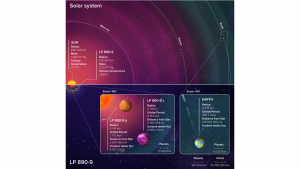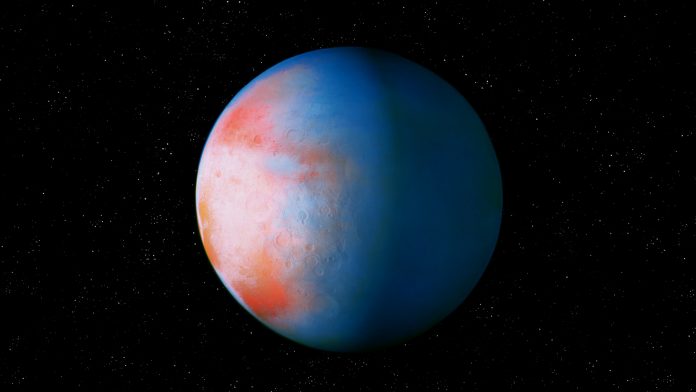An international research team has identified two super-Earth planets orbiting the LP 890-9 star using SPECULOOS telescopes.
LP 890-9, also known as TOI-4306 or SPECULOOS-2, is a small, cool star situated around 100 light-years from our planet and is the second coolest star in which super-Earth planets have been detected, following the famous TRAPPIST-1.
Unearthing super-Earth planets
The first super-Earth – LP 890-9b (or TOI-4306b) – is the innermost in the system and was first identified by NASA’s Transiting Exoplanet Survey Satellite (TESS), a mission dedicated to locating exoplanets orbiting nearby stars.
LP 890-9b is around 30% larger than Earth and completes an orbit of its star in a mere 2.7 days. The researchers utilised their ground-based SPECULOOS (Search for habitable Planets EClipsing ULtra-cOOl Stars) telescopes to confirm and characterise this planet and probe the system for other planets TESS may have missed.
Laetitia Delrez, an astrophysicist at the University of Liège and the leader of the study, said: “TESS searches for exoplanets using the transit method, by monitoring the brightness of thousands of stars simultaneously, looking for slight dimmings that could be caused by planets passing in front of their stars.
“However, a follow-up with ground-based telescopes is often necessary to confirm the planetary nature of the detected candidates and to refine the measurements of their sizes and orbital properties.”
This follow-up is essential for cold stars like LP 890-9, as they emit the majority of their light in the near-infrared, for which TESS has limited sensitivity. Contrastingly, SPECULOOS telescopes are optimised to observe these types of stars with high precision as their cameras are extremely sensitive to infrared.
Michaël Gillon, FNRS Senior Research Associate, co-director of the Astrobiology research unit at ULiège and principal investigator of the SPECULOOS project, commented: “The goal of SPECULOOS is to search for potentially habitable terrestrial planets transiting the smallest and coolest stars in the solar neighbourhood, such as the TRAPPIST-1 planetary system, which we discovered in 2016 thanks to a pilot project with our TRAPPIST-South telescope.
“This strategy is motivated by the fact that such planets are particularly well suited to detailed studies of their atmospheres and the search for possible chemical traces of life with large observatories, such as the JWST.”
Findings from SPECULOOS
The SPECULOOS telescopes have not only confirmed the first super-Earth planet but have also identified an unknown second. This planet, called LP 890-9c (renamed SPECULOOS-2c by the ULiège researchers), is 40% larger than Earth and has an orbital period of 8.5 days. This orbital period places the super-Earth in the habitable zone of its star.

Francisco J Pozuelos, a researcher at the Institute of Astrophysics of Andalusia and a co-author of the study, said: “Although this planet orbits very close to its star, at a distance about ten times shorter than that of Mercury around our Sun, the amount of stellar irradiation it receives is still low, and could allow the presence of liquid water on the planet’s surface, provided it has a sufficient atmosphere.”
“This is because the star LP 890-9 is about 6.5 times smaller than the Sun and has a surface temperature half that of our star. This explains why LP 890-9c, despite being much closer to its star than the Earth is to the Sun, could still have conditions suitable for life.”
The team are now looking to analyse the atmosphere of this planet with instruments such as the JWST, for which LP 890-9c is the second most desirable target among potentially habitable terrestrial planets, only beaten by the TRAPPIST-1 planets.
Delrez concluded: “This comparison does not, however, consider that LP 890-9c is located close to the inner boundary of the habitable zone and could therefore have an atmosphere that is particularly rich in water vapour, which would then boost its atmospheric signals.
“Moreover, models often differ as to the exact position of this inner boundary of the habitable zone depending on the characteristics of the star. Therefore, the discovery of LP 890-9c offers a unique opportunity to understand better and constrain the habitability conditions around the smallest and coolest stars in our solar neighbourhood.”









